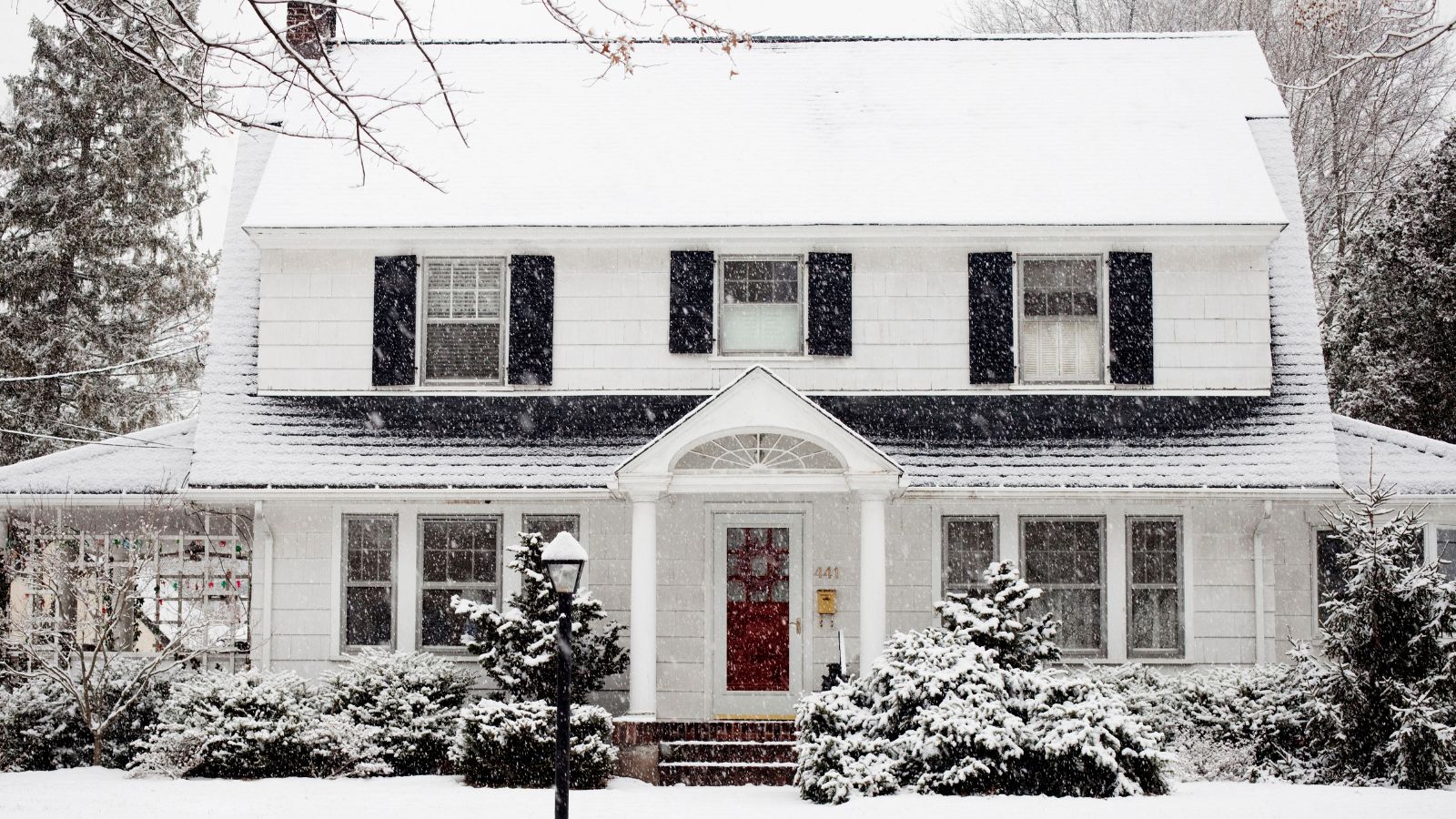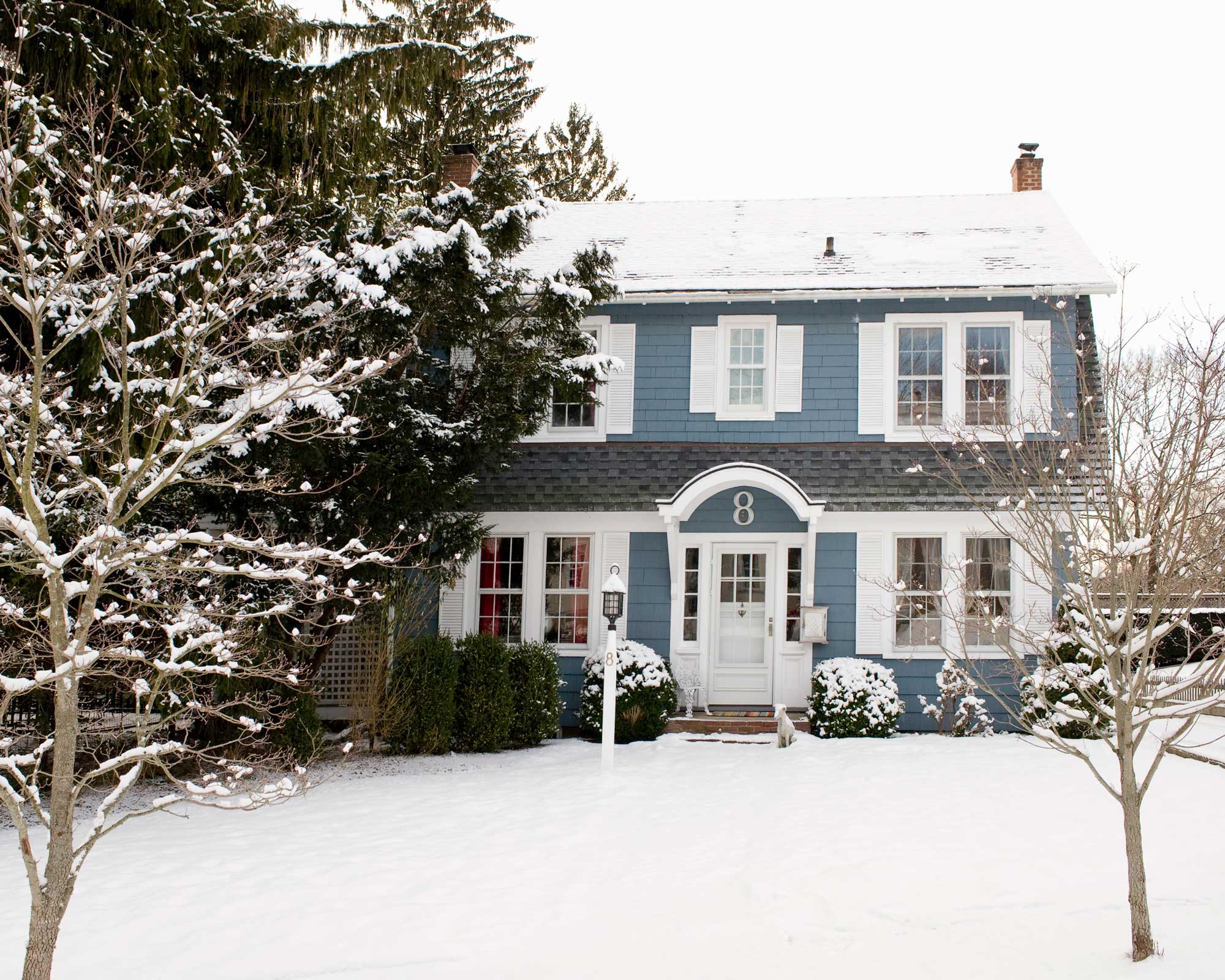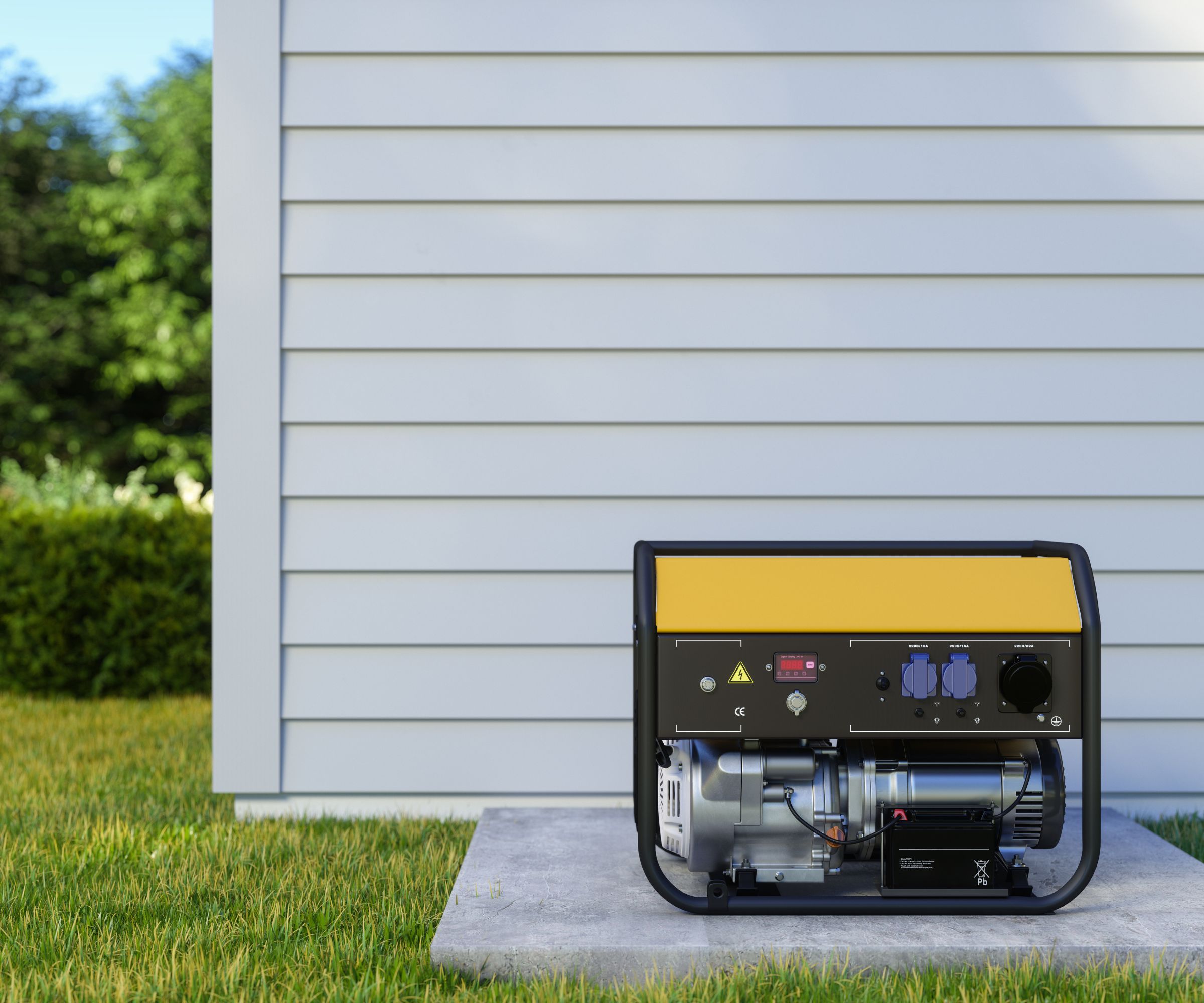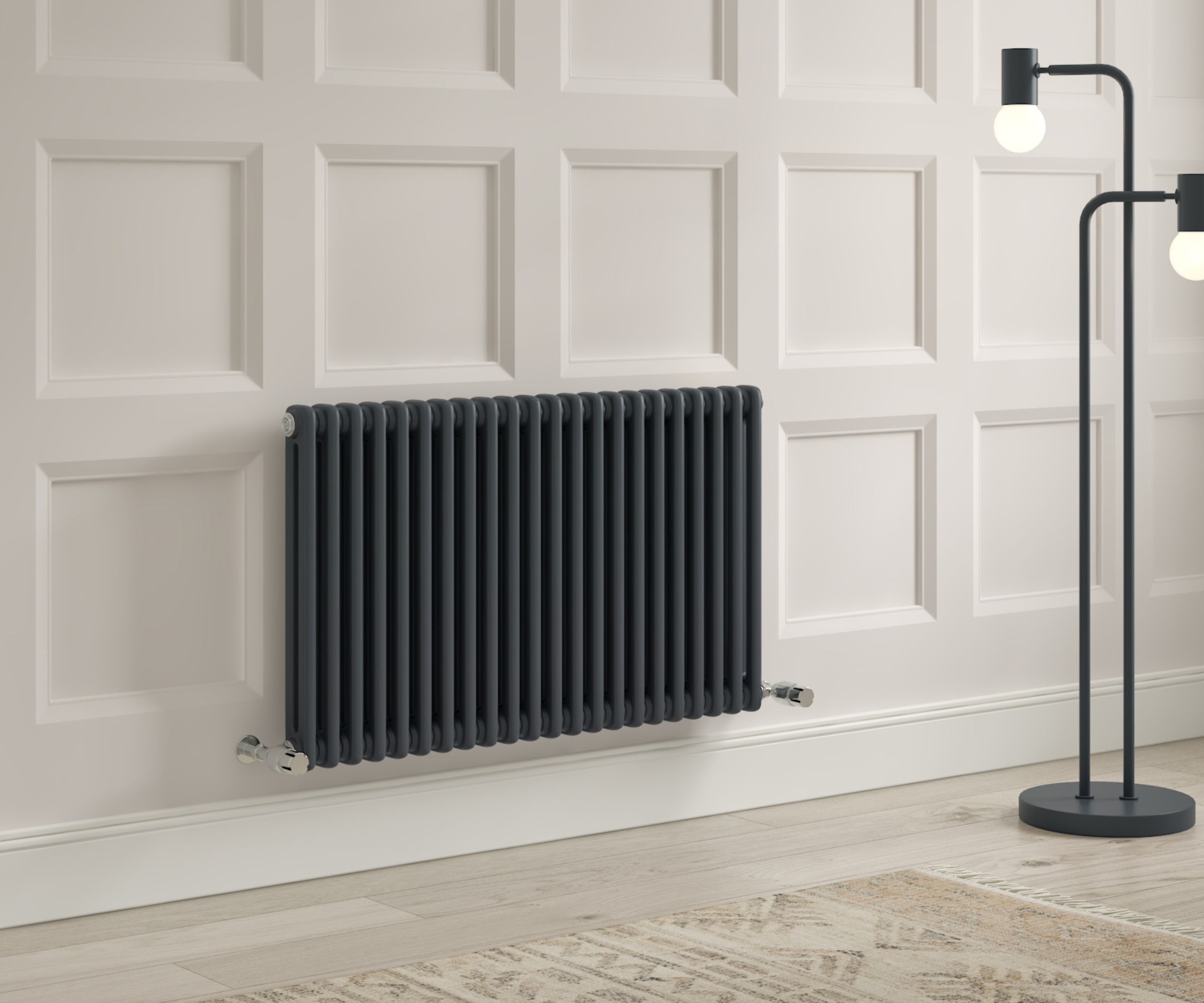How to prepare your home for a snowstorm – 7 steps from survivalists to stay safe, warm and well during extreme weather conditions
Preparation is key, experts warn


Snowstorms can arrive quickly, and with them can come frozen pipes, power outages, and other problems, particularly when storms hit areas that don't usually experience high snowfall.
So, how can you prepare your home ahead of time, and save yourself the expense and emotional distress of damage?
Here, our HVAC, electricity, plumbing and survivalist experts share their tips for getting yourself in the best possible position before the storm hits and make your home emergency ready.
How to prepare your home for a snow storm
1. Create an emergency kit

Much like when preparing your home for a thunderstorm, one of the best ways to prepare your home, family and yourself, for a snowstorm is by putting together an emergency kit of essentials.
Max Veggeberg, CEO and founder of Tetra, says, 'Keep a stock of portable and functional safety supplies, such as extra batteries and non-electric heat packs, along with flashlights and emergency blankets.' We recommend the HotHands Body & Hand Super Warmers available at Amazon for this, as they provide up to 18 hours of heat and require only air to activate.
Christian Schauf, emergency preparedness expert and CEO and founder of Uncharted Supply Co., also advises including a fully-stocked first aid kit equipped with a flashlight, burn gel, zip ties, multi-tool, bandages, a blanket, and more, such as the Uncharted Supply Co. First Aid Plus Kit available at Amazon. 'This kit is made to aid minor injuries and is built to last for years to come,' he says, making it worth the investment, but there are plenty of affordable options, available, too.
Stocking up on water can help you to bathe and clean when there's a water supply outage.
Design expertise in your inbox – from inspiring decorating ideas and beautiful celebrity homes to practical gardening advice and shopping round-ups.
It's also worthwhile to purchase a portable jump-starter for snowy vehicle emergencies, adds Schauf, who recommends the The Zeus Air Jump Starter and Inflator, available at the Uncharted Supply Co. 'This lightweight jump starter packs enough power to jump-start up to a 6-liter diesel engine, and now features an air compressor to inflate tires and snow tubes,' he says.
It also chargers phones, tablets, and laptops, with USB-C and USB outputs, and includes a bright LED light for visibility in harsh winter conditions.
There are also budget-friendly alternatives, such as the NOCO Boost Plus UltraSafe Car Battery Jump Starter available at Amazon.
Don't forget to prep ahead for your pets, too, says Amber Batteiger, animal emergency services disaster relief expert at Embrace Pet Insurance. 'Preparing in advance is essential for keeping your pets safe, as they are part of the family too. Keep pets indoors, as they are susceptible to frostbite and hypothermia just like us.'
Where applicable, you will also need to include pet supplies, such as food, medications, and jackets in your emergency kit.
All prices correct at time of publication.

This comprehensive emergency kit is conveniently packed in a portable soft-zippered case, with clear plastic pockets to keep products organized and easily accessible.

These emergency blankets have countless uses, from making an emergency shelter to a rain poncho or backpack cover. They're heavy-duty yet lightweight, and are designed to keep you warm and dry in any weather.

These compact flashlights are highly rated for their brightness, with five modes, and a powerful, bright, and zoomable beam.
2. Prepare your plumbing

To prepare your home for a freeze, it's vital to winterize home plumbing indoors and outdoors, says Matt Kunz, president of Mr. Rooter, a Neighborly company.
He advises, 'Homeowners should ensure pipes are insulated or protected, and outside faucets are covered to prevent freezing. For plumbing, towels, and a bucket and wrench (such as the 8 inch Adjustable Wrench with Sure Grip Handle available at Walmart) should be kept on hand in case a leak occurs. Additionally, homeowners should have pipes insulated and inspected prior to winter.
'Test sump pumps to prevent flooding in basements (and protect your home from flooding) and, in order to be fully prepared for extended power outages, ensure pipes are covered and homeowners know where water shut-off valves are located in the home.'
3. Clean gutters

Before extreme weather conditions hit, Steve Leasure, vice president of operations at Rainbow Restoration, recommends taking the time to clean gutters from the roof.
He says, 'Rapid snowmelt can overwhelm poorly designed or clogged drainage systems, so be sure to remove leaves and debris from gutters to ensure proper drainage and prevent ice dams, and extend downspouts away from your home's foundation to avoid water seepage in the basement.'
Leasure also suggests inspecting your roof at the same time, for damaged or missing shingles. If you spot any, repair these issues ahead of time to prevent ice dams and having to fix a ceiling leak.
4. Check your smoke and carbon monoxide detectors

Do you know how often you should test your smoke detector? Before a snowstorm, HVAC expert Veggeberg says, 'Check smoke and carbon monoxide detectors to ensure they're functioning,' which will help immeasurably to detect common fire risks in your home during extreme weather.
You might just need to swap out the batteries, but always call a pro if you're unsure yours is working correctly.
We recommended hybrid models, such as the Kidde Smoke & Carbon Monoxide Detector available at Amazon, which is self-testing for added protection, and only requires a battery change once every ten years.
5. Consider a back-up generator

Power outages happen all too often during snowstorms, which is why Joel Worthington, president of Mr. Electric, a Neighborly company, recommends hooking a generator up to your home.
He says, 'Having a backup generator can help the home maintain power during outages. Standby generators are designed to kick on automatically during power loss to the home. Portable generators are also an option, and come in many variations and sizes.'
Importantly, Worthington highlights that homeowners should have their standby generators, which can be used to heat a home in a power outage, serviced by a service professional.
'Portable generators should be properly maintained as well, so they are ready to operate should the home lose power,' he continues. 'Check extension cords for damage and exposed wires.'
6. Set your heating

During a snow storm, you may well find yourself struggling to keep a home warm all day, so preparation is key.
HVAC expert Veggeberg says, 'If homeowners are going to be out for an extended period of time, ensure the heating systems remain at 60°F or higher,' which is the perfect temperature to run your heating to avoid frozen pipes.
'If your power or your heating system goes out, in the case of furnace systems or heat pumps, make sure the outdoor unit is not frozen,' he adds, particularly if your furnace vent is outside on the wall. This is highlighted by David Watkins, third-generation HVAC professional with over 30 years of experience and CEO of Watkins Heating & Cooling.
He explains, 'If that vent is low enough, snow can drift and block the intake, shutting down your furnace. Knowing where your furnace vent is and keeping it clear during a heavy storm could save a service call.'
As the main aim during a snowstorm will be keeping your house warm without turning up the heat, both Watkins and Veggeberg recommend having your heating system checked or replaced before extreme cold weather hits, particularly if it has had issues in the last five years.
'Schedule a professional furnace tune-up every year as soon as the weather starts to get cold,' advises Watkins. 'During this maintenance check, an HVAC pro will inspect every part of your system to fix issues before they lead to breakdowns.
They'll also clean and tune your heating system to get it running safely, reliably, and at peak efficiency. This means a warmer home and lower energy bills,' helping you to save money at home and cut energy bills at the same time.
Learn more about heating your home when there is a power outage.
7. Inspect your fireplace and chimney

You might be needing your fireplace and chimney during a snowstorm, particularly during the event of a power outage, so it's important to prep your chimney for winter weather, says restoration expert Leasure.
'Have chimneys cleaned and inspected by a professional, and ensure fireplace dampers are working correctly to minimize drafts,' he suggests. Stock up on firewood, too, to ensure your fireplace is ready and waiting for use if needed.
If your home has a fireplace that's not in use, HVAC expert Veggeberg recommends blocking the chimney with a draft stopper, such as the number one bestselling Magnetic Fireplace Blanket available at Amazon, to draft proof your fireplace and prevent heat from escaping.
By the same token, you may also need to do some DIY draft-proofing, sealing gaps with caulk and weatherstripping to winterize your house.
FAQs
What shouldn't you do during a snowstorm?
During a snowstorm, the most important thing is keeping warm and dry. For that reason, avoid leaving your home unless completely necessary, and never head out in wet clothes.
It's also imperative to avoid using a snowblower unless you're well-versed in how they work. Luckily, you can rely on the best way to shovel snow instead, provided it's safe to head outdoors, using a shovel such as the Snow Joe Shovelution Snow Shovel available at Amazon.
Can you do laundry during a snowstorm?
You might find yourself needing to do laundry during a snowstorm, and it is safe to do so, as long as your home hasn't lost power. If it has, you will still be able to hand-wash clothes, although this might have to be done with cold water, depending on whether you have an electric or gas boiler.
When a snowstorm is on the way, it's more important than ever to prepare a house for cold weather, to keep your home, family, pets and yourself safe and warm.
Remember, too, that winter is not the only threat to your home; there are some serious ways summer heat can damage your home, that you may want to prepare for, too.

Ottilie joined Homes & Gardens last year, after finishing a Master's in Magazine Journalism at City, University of London. With previous contributions in Livingetc and Motorsport Magazine, she produces content for the Solved section on the website, focusing on clever tips and tricks to keep your home beautiful, organized, and clean, with particular expertise on all things home fragrance. She also has a Master's degree in English Literature and History of Art from the University of Edinburgh, where she developed a love for inspiring interiors and architecture.

